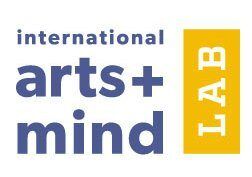Information courtesy of The Art Story website
I selected examples of several of the artists’ works identified with the Movement
Ethereal and atmospheric, yet often equally geometric and analytic, the experiences of the Light and Space Movement present a striking paradox to the viewer, one that requires active, and often multi-sensory, participation. There is no single defining aesthetic amongst the loosely affiliated group of Los Angeles-based Light and Space artists, but instead a preoccupation with the viewer’s perception and participation. Their work ranges from site-specific installations washed in radiant, neon light, or even projecting from the wall, to mysterious glowing columns placed within a darkened room, to totemic sculptures made of glass, acrylic or resin, which reflect and absorb ambient light and shadows, instead of radiating their own.
The genesis of the movement occurred in the late 1950s and lasted through the 1970s, with a wide array of artists following similar conceptual philosophies, including Peter Alexander, Larry Bell, Craig Kauffman, Mary Corse, Frederick Eversley, Helen Pashgian, De Wain Valentine, and perhaps the best-known Robert Irwin and James Turrell. The group found inspiration in idyllic popular notions associated with Southern California: sun, cars, surf, and sand. Yet, in equal measure, there is an embrace of psychology and technology that unite these artists in explorations of materiality and human perception throughout their distinct bodies of work.
- Light and Space developed in parallel to the dominant Minimalist movement in New York in the early 1960s, each characterized by industrial materials and a hard-edge, geometric aesthetic. However, where seriality and repetition was a key component of Minimalist works, artists associated with Light and Space usually created singular objects, whether sculptural or environmental in scale.
- One of the signature characteristics of the Light and Space movement is the choice of alternative materials employed in the creation of both two- and three-dimensional works of art. In lieu of paint and canvas, or marble and bronze, these artists looked to alternative materials as seemingly mundane as glass and plastic as well as experimenting with newer technologies, particularly polyester resins, cast acrylic, neon and argon lights, influenced by the flourishing aerospace industry.
- The term “Light and Space” derives from a 1971 exhibition at the UCLA University Art Gallery, titled Transparency, Reflection, Light, Space: Four Artists, including Peter Alexander, Larry Bell, Robert Irwin and Craig Kauffman, in which, as described by the catalogue, “the works displayed served as liaison between the artists and the spaces they chose to animate.” Through this idea, the connection of Light and Space to Kinetic Art is revealed, as it is the experience, over the object, which the artists emphasized.
- The movement has also been called California Minimalism, because, as art critic Sascha Crasnow wrote, it is similarly defined by Minimalism’s “qualities of stripping down the object… but added in a uniquely Californian spin – the interaction of light and space.” The movement is also closely related to Finish/Fetish, a term first coined by John Coplans in the late 1960s referencing a trend toward the use of plastics with glossy finishes and highly polished surfaces, perhaps best exemplified by artists Billy Al Bengston, Craig Kauffman, and John McCracken.
- The concept of The Sublime resonates within the all-encompassing aesthetic experience of a Light and Space installation. Feelings of timelessness permeate the multisensory event, overwhelming and nearly transcendental, evoking the definition offered by German philosopher Emmanuel Kant who describes the sublime as “found in a formless object insofar as limitlessness is represented in it.” Therefore, the sublimity of the Light and Space experience does not reside in the physical object or even the space where the work is situated, but in the ethereal phenomenon of light itself.
Editor’s Note:
The Light and Space Art Movement was happening on the West Coast of the US when the founders of Lumonics, Mel and Dorothy Tanner, began their light art on the East Coast. Something light was in the air. The Tanners were part of a movement they did not know existed.
Joseph Albers described this as “Duplicity in events“: What happens here as new, happens somewhere else just the same way. That’s so exciting. That is one of the secrets of life. Why did I sometimes build a lamp in the Bauhaus and somebody comes from Holland and says, ‘Oh, somebody in Holland makes just the same lamp.’ Such duplicity shows that the time is ripe for a problem and thus it is in the air, and will be solved here – and there.”*
*excerpted from: Oral history interview with Josef Albers, , 22 JUNE – 5 JULY 1968, FOR THE ‘ARCHIVES OF AMERICAN ART’, SMITHSONIAN INSTITUTION

Helen Pashgian is an American visual artist who lives and works in Pasadena, California. She is a primary member of the Light and Space art movement of the 1960s, but her role has been historically under-recognized. Wikipedia
















